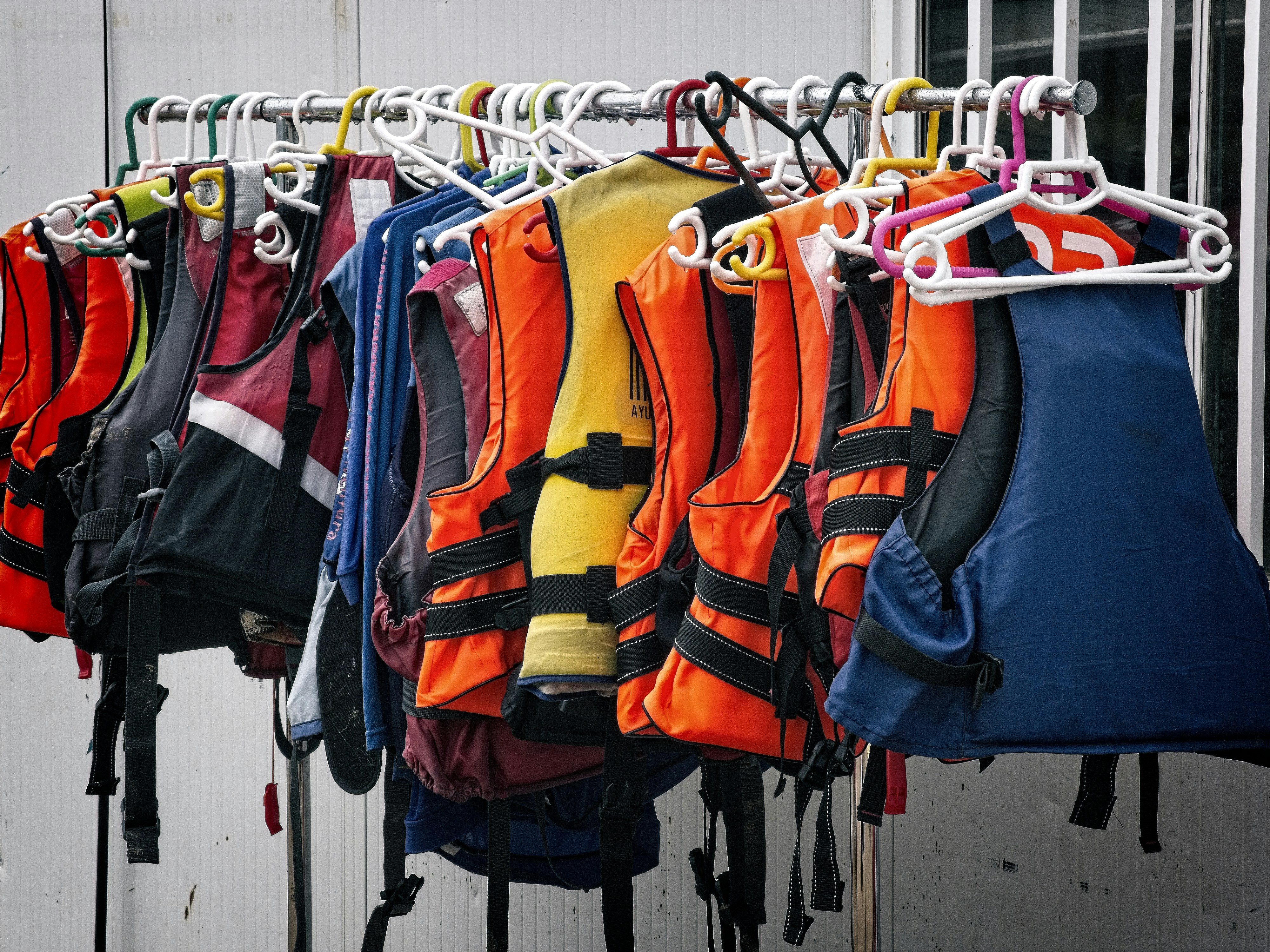Vessel Safety Checks
Q: What is a Vessel Safety Check?
A: A Vessel Safety Check is a free inspection to make sure your boat is in compliance with all federal and state boating laws and thus safe for you and your guests. If your boat doesn’t pass, don’t worry—there are no fines or penalties. You’ll just get a report with suggestions on what to fix.
Q: Why should I get a Vessel Safety Check?
A: A Vessel Safety Check is all about keeping you safe. It makes sure your boat meets all necessary safety standards, so you can relax knowing you're ready for anything. And if something goes wrong, you'll have the right gear to deal with it and get help if needed.
Q: How can I get my vessel inspected by the U.S. Coast Guard?
A: Go to the Vessel Safety Check website. Fill out the short request form to find volunteer vessel examiners near you.
Q: What’s a Vessel Safety Check sticker?
A: All vessels that pass the safety check are awarded a U.S. Coast Guard/Auxiliary Decal. This will inform various entities, including the Coast Guard, Harbor Patrol, and other boating law-enforcement and safety agencies, that your boat is fully compliant with federal and state boating laws.
For more on Vessel Safety Checks, check out this guide.
Boating Safety Courses
Q: Is a boating safety course required?
A: Recreational boaters are often encouraged (and sometimes required) to get a boating license and complete a safety course. Even if a course isn't mandatory, it's important to remember that knowledgeable and cautious operators are better at recognizing and handling potential risks.
Q: How can I find a safety course offered by the Coast Guard?
A: Check out the United States Coast Guard Auxiliary website to find a course near you. They offer both in-person and virtual options.
Q: How can I find a safety course offered by the U.S. Power Squadrons?
A: Head to the United States Power Squadrons website to locate a course or seminar near you. They offer all different types of classes like boat handling, marine navigation, sailing, weather, and more.
Life Jackets
Q: Am I required to carry life jackets on my recreational boat?
A: Federal law generally requires a Coast Guard-approved life jacket that’s in good shape and fits properly for everyone on your boat. If your boat is over 16 feet long, you also need to have a Coast Guard-approved throwable device (Type IV) onboard.
Q: When should I wear a life jacket?
A: The USCG suggests keeping your life jacket on at all times while the boat is moving. Should you or a passenger unexpectedly end up in the water, the PFD is meant to keep the wearer afloat.
Gear and Equipment
Q: What are the safety equipment requirements for my boat?
A: Safety equipment requirements will vary based on boat type, length, and area of operation, but almost all vessels must have:
- Personal Flotation Devices (Life Jackets, Flotation Aids, Throwable Devices)
- Fire Extinguishers
- Visual Distress Signals
- Sound Producing Device
- Very High Frequency (VHF) Marine Radio
Q: What does a visual distress signal do?
A: It shows that your boat is in trouble and needs help. It makes it easier for rescue teams to spot where you are and come to your aid.
Q: What visual distress signals are required on my boat?
A: You must carry visual distress signals if you're operating on the Great Lakes, High Seas, Territorial Seas, or connecting waters where the entrance width exceeds 2 nautical miles, with some exceptions.
The following vessels do not need to carry day signals but must have night signals when operating from sunset to sunrise:
- Recreational boats under 16 feet in length.
- Boats involved in organized events like races, regattas, or marine parades.
- Open sailboats under 26 feet that lack propulsion machinery.
- Manually propelled boats.
Q: What type of fire extinguisher do I need on my boat?
A: Most boats require marine-rated Class B fire extinguishers. Look for extinguishers labeled with a rating of 5-B or 20-B. These are designed to handle fires with flammable liquids and gases.
Q: Why do I need a sound-producing device on my boat?
A: A sound-producing device helps other boats hear you, especially in bad weather or low visibility. It’s a way to let nearby boats know your whereabouts and helps to reduce the risk of collision.
Q: What is an Emergency Position Indicating Radio Beacon (EPIRB)?
A: An EPIRB is a device used in emergencies to signal for help. When activated, it sends out a distress signal with your exact location to search and rescue teams via satellite.
Q: What is a Personal Locator Beacon (PLB)?
A: A PLB works like an EPIRB but is made for personal use. When you turn it on, it sends a distress signal with your location to satellites, helping rescuers find you. It’s great for emergencies on land, like hiking or camping, but you can also use it on boats.
Q: How can I register my Emergency Position Indicating Radio Beacon (EPIRB) and Personal Locator Beacon (PLB)?
A: You can register it online at www.beaconregistration.noaa.gov.
» MORE: USCG Requirements for Recreational Vessels
Float Plans
Q: When should I file a float plan?
A: You should fill out a float plan and leave it with a responsible person every time you head out on the water.
Q: How do I fill out and file a float plan?
A: The Coast Guard offers a free float plan. Visit http://floatplancentral.cgaux.org/ to access the form and follow the instructions. After completing the form, print it out and leave it with a friend or family member before you set out on the water.
Q: Should I include a photo with my float plan?
A: Yes, it's recommended to add a photo of your vessel. Since many boats look similar, a photo can help responders identify your boat if necessary.

